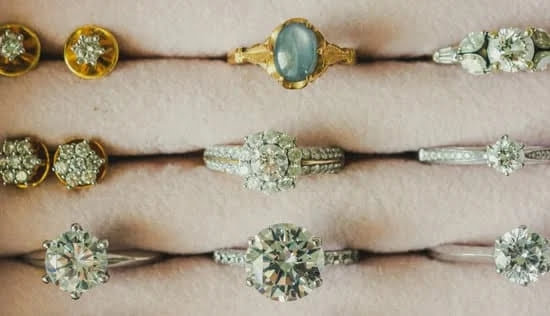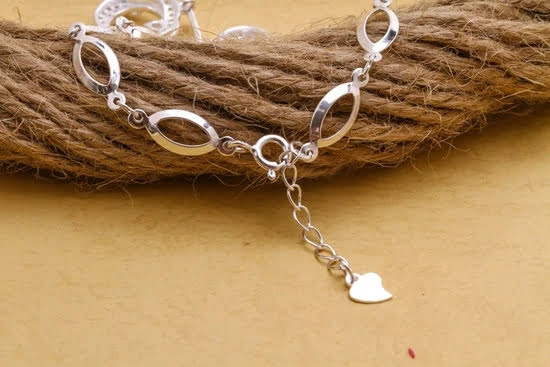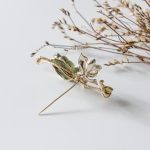The history of tortoise shell jewelry dates back to ancient times, and its significance has evolved over the centuries. From its origins to its cultural importance and legal considerations, this article explores the enduring legacy of tortoise shell jewelry.
Tortoise shell jewelry has a rich history that can be traced back to ancient civilizations. The intricate designs and cultural significance of these pieces have contributed to their enduring legacy. This article delves into the origins, evolution, and modern interpretations of tortoise shell jewelry, shedding light on its historical and cultural importance.
In addition to exploring the artistry and craftsmanship behind tortoise shell jewelry, this article also addresses the ethical and legal considerations surrounding its use. Preservation and conservation efforts for tortoise species are also discussed in relation to the controversy surrounding the decline of these animals due to the demand for their shells in jewelry making. Let’s delve into the world of tortoise shell jewelry and understand its complex history and impact on cultures around the globe.
The Ancient Origins of Tortoise Shell Jewelry
The history of tortoise shell jewelry dates back thousands of years, with evidence of its use found in ancient civilizations around the world. In many cultures, tortoise shell was revered for its beauty and durability, making it a popular material for creating jewelry and other ornamental items. The ancient origins of tortoise shell jewelry can be traced to various regions, including China, Egypt, Mesoamerica, and the Mediterranean.
In China, tortoise shell has been used for centuries to create intricately carved jewelry and decorative objects. The art of carving tortoise shell reached its peak during the Shang and Zhou dynasties, where it was used to make hair ornaments, combs, and ceremonial objects. In Egypt, tortoise shell was also valued for its aesthetic qualities and symbolic significance. It was often used to create amulets and pendants that were believed to offer protection and ward off evil spirits.
Similarly, in Mesoamerica, particularly among the Maya and Aztec civilizations, tortoise shell was highly prized for its rarity and beauty. It was carved into elaborate jewelry pieces such as ear flares, pendants, and bracelets that were worn by nobility and elite members of society. The intricate craftsmanship of these artifacts reflects the importance placed on tortoise shell within these ancient cultures.
The use of tortoise shell in jewelry also has a rich history in the Mediterranean region. In ancient Greece and Rome, tortoise shell was fashioned into decorative hairpins, brooches, and earrings that were popular among both men and women. The exquisite designs and fine craftsmanship of these pieces demonstrate the high regard for tortoise shell as a luxury material during this time period. The ancient origins of tortoise shell jewelry showcase its enduring appeal across diverse cultures throughout history.
Evolution of Tortoise Shell Jewelry Design
Tortoise shell jewelry has a rich and varied history that dates back to ancient civilizations. The use of tortoise shell in jewelry can be traced back to the ancient Egyptians, who used it to create intricate and detailed pieces that were highly prized.
From there, the practice spread to other cultures, including the Greeks and Romans, who also utilized tortoise shell in their jewelry designs. The use of tortoise shell in jewelry continued throughout the Middle Ages and into the Renaissance, with artisans using it to create everything from delicate pendants to ornate hair combs.
As time passed, the design of tortoise shell jewelry evolved alongside changing fashion trends and cultural influences. In the 18th and 19th centuries, tortoise shell jewelry experienced a surge in popularity, particularly in Europe. Designs became more elaborate, with intricate filigree work and delicate carving becoming commonplace. During this time, tortoiseshell was also combined with other materials such as gold, silver, and gemstones to create stunning pieces that were highly sought after.
The 20th century saw a shift in the design of tortoise shell jewelry as societal attitudes towards wildlife conservation began to change. With the recognition of the impact of harvesting on endangered species like sea turtles, restrictions on the use of tortoiseshell were put in place.
This led to a decline in traditional tortoiseshell jewelry making and prompted designers to seek out alternative materials for their creations. Today, modern interpretations of tortoiseshell jewelry often utilize sustainable materials like resin or plastic to mimic the appearance of genuine tortoiseshell while avoiding harm to endangered species.
| Evolution | Tortoise Shell Jewelry Design |
|---|---|
| Ancient civilizations | Elaborate filigree work |
| 18th – 19th centuries | Combining with gold, silver, gemstones |
| 20th century | Shift towards sustainable materials |
Cultural Significance of Tortoise Shell Jewelry
Tortoise shell jewelry has a rich cultural significance that dates back to ancient civilizations, where it was highly valued and revered. The use of tortoise shell in jewelry and adornments holds symbolic meaning in many cultures, often representing longevity, wisdom, and protection.
Ancient Chinese Culture
In ancient China, tortoise shell was believed to be a symbol of immortality and was often used in religious ceremonies and rituals. It was also used to create intricate jewelry pieces that were worn as a status symbol among the elite class. The unique patterns and coloration of tortoise shell made it a highly sought-after material for decorative items.
Native American Traditions
Among various Native American tribes, tortoise shell has been historically used in jewelry making as well. The Haudenosaunee people, also known as the Iroquois Confederacy, have crafted beautiful hair combs and ornaments from the shells of box turtles, which they considered important symbols of protection and resilience.
Japanese Artistic Practices
In Japan, artisans have long appreciated the beauty of tortoise shell and utilized it in traditional craftwork such as hair accessories, inro (small decorative cases), and kanzashi (ornamental hairpins). The intricate process of working with tortoise shell reflects an appreciation for nature’s bounty as well as exquisite craftsmanship.
The history of tortoise shell jewelry is steeped in diverse cultural traditions that have contributed to its lasting allure and significance. Although modern perspectives on using tortoiseshell are evolving due to conservation concerns, the cultural value of this material continues to be influential in contemporary design practices.
The Decline and Controversy of Tortoise Shell Jewelry
Unfortunately, the beautiful and unique art of creating jewelry from tortoise shells has been met with controversy and decline in recent years. The history of tortoise shell jewelry dates back centuries, but the demand for this type of jewelry has led to the endangerment and near extinction of various tortoise species.
The unethical harvesting and trade of tortoise shells have contributed to a significant decline in the population of these magnificent creatures. This has led to international regulations and bans on the use of tortoise shells in jewelry and other products. In addition, increasing awareness of animal rights and environmental conservation has caused a shift in public perception, leading to a decrease in the popularity of tortoise shell jewelry.
Despite its rich cultural heritage and aesthetic appeal, the controversy surrounding tortoise shell jewelry has resulted in a decline in its production and consumption. In many countries, including the United States, it is now illegal to buy or sell products made from tortoise shell. As a result, artisans and designers have been forced to seek alternative materials for their creations.
The once thriving industry of tortoise shell jewelry has faced scrutiny and condemnation due to its negative impact on wildlife conservation efforts. The decline of this traditional art form serves as a sobering reminder of the importance of ethical practices and sustainability in the world of fashion and accessories.
Modern Interpretations of Tortoise Shell Jewelry
In recent years, there has been a growing trend towards the use of alternative materials in jewelry-making, due to an increased awareness of the ethical and environmental concerns surrounding the use of tortoise shell. As a result, designers and artisans have been finding creative ways to replicate the look and feel of tortoise shell without actually using the real material.
Alternative Materials
One of the most popular alternatives to tortoise shell is acetate, a plant-based plastic that can be molded and shaped to mimic the unique patterns and colors of real tortoise shell. Acetate is not only cruelty-free but also more sustainable, making it an attractive option for both designers and consumers.
Contemporary Designs
Contemporary jewelry designers have also been experimenting with new techniques and styles when creating pieces inspired by tortoise shell. From bold statement earrings to delicate pendants, modern interpretations of tortoise shell jewelry often feature sleek, minimalist designs that appeal to today’s fashion-conscious consumers.
Ethical Fashion Movement
The rise of the ethical fashion movement has also played a significant role in reshaping the perception of tortoise shell jewelry. Many consumers are now seeking out accessories that are not only stylish but also cruelty-free and environmentally responsible. This shift in consumer mindset has prompted more and more designers to explore sustainable alternatives to traditional materials like tortoise shell.
These modern interpretations of tortoise shell jewelry illustrate how cultural traditions can evolve in response to changing values and ethical considerations. By embracing innovative materials and design techniques, contemporary artisans are breathing new life into this ancient art form while honoring the history of tortoise shell jewelry.
The Legal and Ethical Considerations of Using Tortoise Shell in Jewelry
Tortoise shell jewelry has a long history, dating back to ancient civilizations. However, the use of tortoise shell in jewelry has become a controversial issue due to the ethical and legal considerations surrounding its production. Here are some important factors to consider when it comes to using tortoise shell in jewelry:
- Legal regulations: Many countries have strict legal regulations on the use of tortoise shell in jewelry production. For example, the Convention on International Trade in Endangered Species of Wild Fauna and Flora (CITES) has placed restrictions on the international trade of tortoise shell products. This is because many species of tortoises are endangered or at risk of becoming endangered due to overexploitation for their shells.
- Ethical concerns: The harvesting of tortoise shells often involves cruel practices that harm these gentle creatures. In some regions, wild tortoises are illegally captured and slaughtered for their shells, leading to a decline in their populations and pushing them closer to extinction. This raises ethical questions about the sustainability and morality of using tortoise shell in jewelry.
- Sustainable alternatives: As a response to the declining population of tortoises and the ethical concerns surrounding their exploitation, many jewelry designers have turned to sustainable alternatives for creating the look of tortoise shell. These include materials such as resin, celluloid, and vegetable ivory that mimic the appearance of genuine tortoise shell without causing harm to endangered species.
Preservation and Conservation Efforts for Tortoise Species
The history of tortoise shell jewelry is closely intertwined with the decline of various tortoise species due to over-harvesting. As a result, there have been concerted efforts in recent years to preserve and conserve these ancient creatures. One such effort is the establishment of protected areas and conservation programs aimed at safeguarding the natural habitats of tortoises around the world.
Many organizations and governments have also implemented legislation to regulate the trade of tortoise shell and products made from it. For instance, the Convention on International Trade in Endangered Species of Wild Fauna and Flora (CITES) has placed strict regulations on the import and export of tortoise shell, aiming to curb illegal trafficking and protect vulnerable tortoise populations.
In addition, educational initiatives have been developed to raise public awareness about the plight of tortoises and the impact of their exploitation for jewelry and other commercial purposes. These efforts aim to encourage responsible consumer choices and promote sustainable alternatives to using tortoise shell in jewelry production.
| Preservation Efforts | Conservation Programs |
|---|---|
| Establishment of protected areas | Regulations on trade through CITES |
| Legislation to regulate trade | Educational initiatives for public awareness |
Conclusion
In conclusion, the history of tortoise shell jewelry is a rich and complex tapestry that spans millennia. From its ancient origins as a symbol of status and wealth to its evolution in design and cultural significance, tortoise shell jewelry has left an indelible mark on human history. Despite its decline and the controversy surrounding its use, modern interpretations of tortoise shell jewelry continue to captivate with their timeless beauty.
The legal and ethical considerations of using tortoise shell in jewelry have sparked important conversations about conservation and preservation efforts for endangered tortoise species. As awareness grows, so do the efforts to protect these magnificent creatures from exploitation and endangerment. Organizations around the world are working tirelessly to ensure the survival of tortoises for future generations.
The enduring legacy of tortoise shell jewelry serves as a reminder of our responsibility to respect and preserve the natural world. While we can appreciate the artistry and craftsmanship of historical pieces, it is crucial to support sustainable alternatives and contribute to conservation efforts. By doing so, we can honor the legacy of tortoise shell jewelry while protecting the species that inspired its creation.
Frequently Asked Questions
What Is the Origin of the Tortoiseshell Pattern?
The tortoiseshell pattern originates from the actual shell of hawksbill sea turtles. This unique pattern is highly sought after for its beautiful mix of dark and light colors.
What Is the Origin of Tortoise Shell?
Tortoise shell, on the other hand, comes from the shells of land-dwelling tortoises. These shells were historically used to make various items like combs, eyeglass frames, and other decorative objects.
When Did Tortoiseshell Become Illegal?
The trade of tortoiseshell became illegal in 1973 when the hawksbill sea turtle was listed under CITES (Convention on International Trade in Endangered Species of Wild Fauna and Flora). This international agreement aimed to protect endangered species from over-exploitation through international trade.

Welcome to my jewelry blog! My name is Sarah and I am the owner of this blog.
I love making jewelry and sharing my creations with others.
So whether you’re someone who loves wearing jewelry yourself or simply enjoys learning about it, be sure to check out my blog for insightful posts on everything related to this exciting topic!





